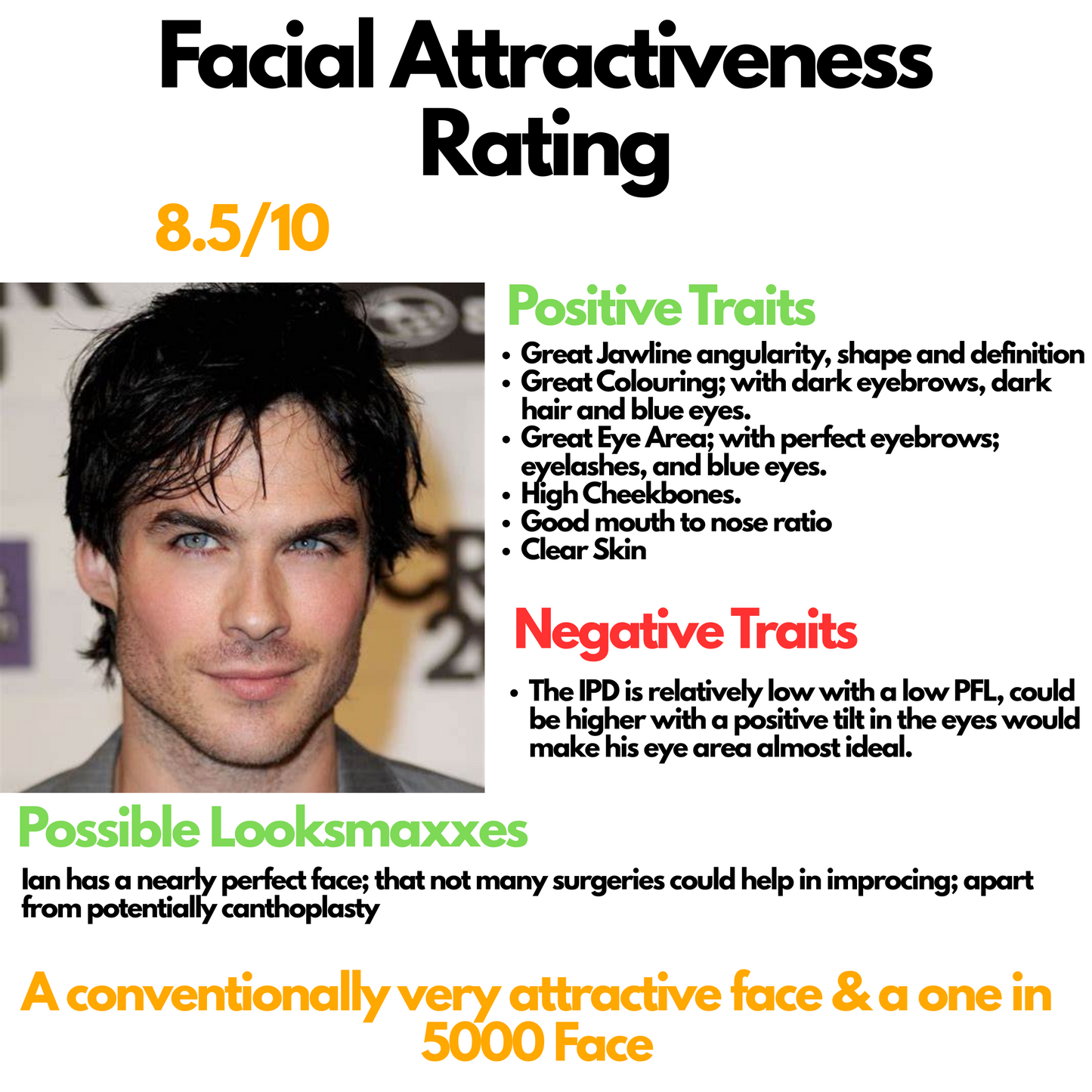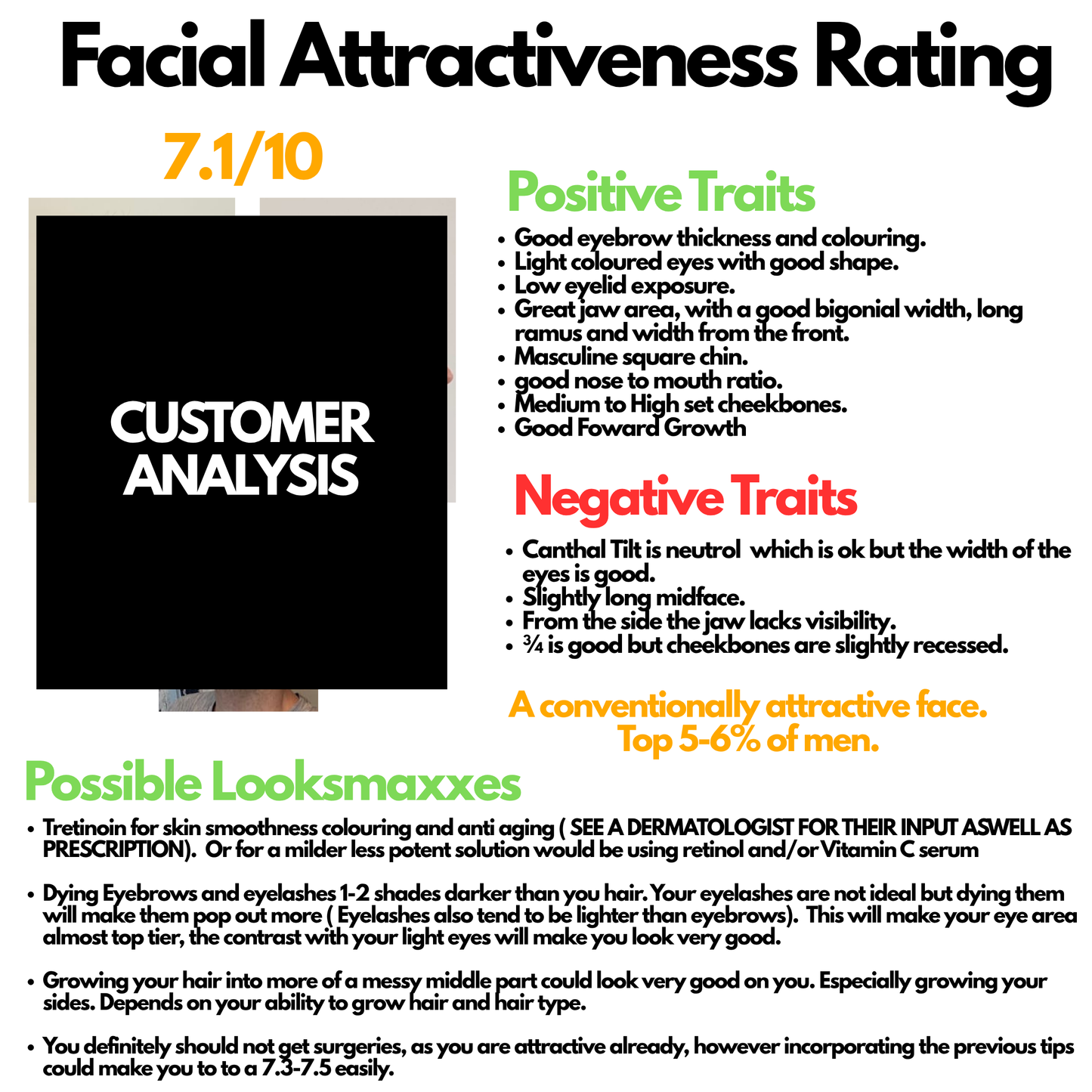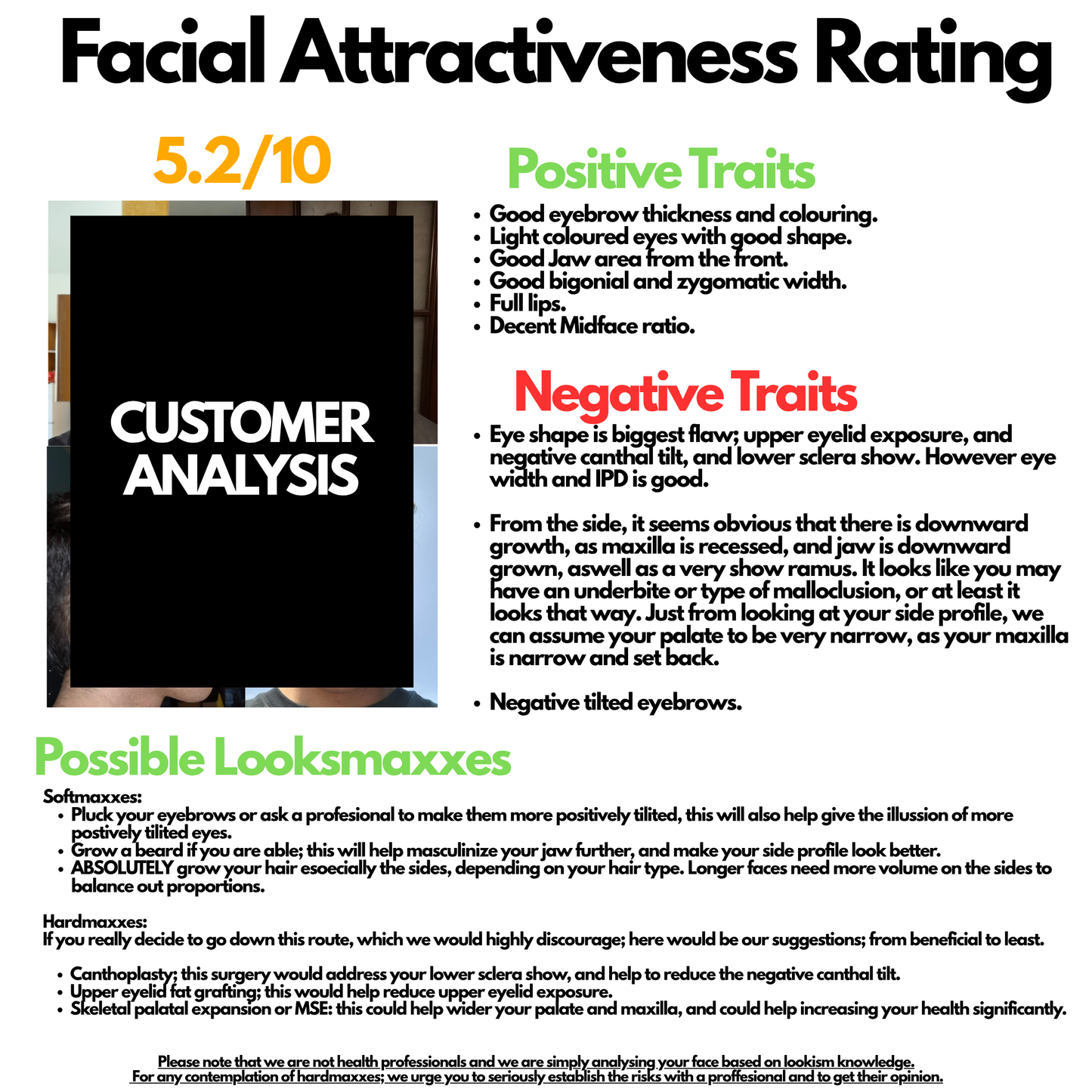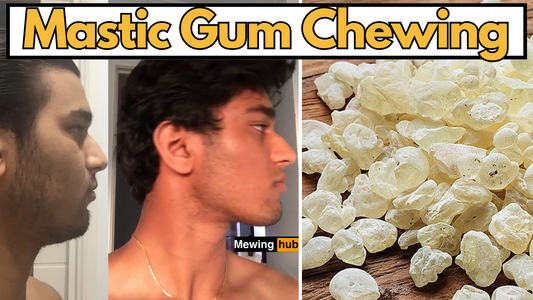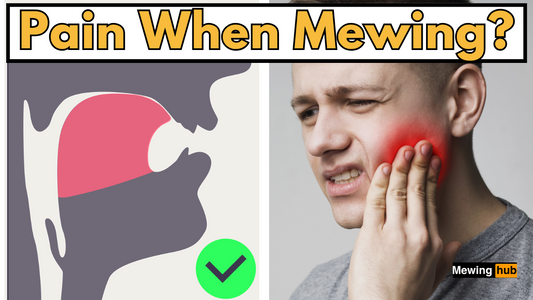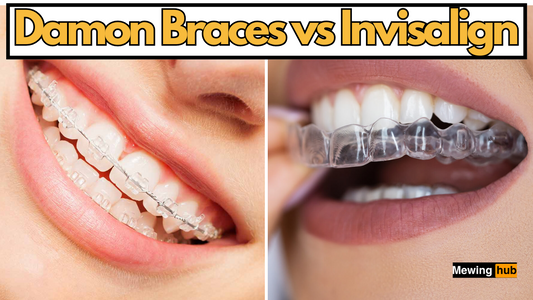Mewing vs Chewing: Why These Should be Done Together
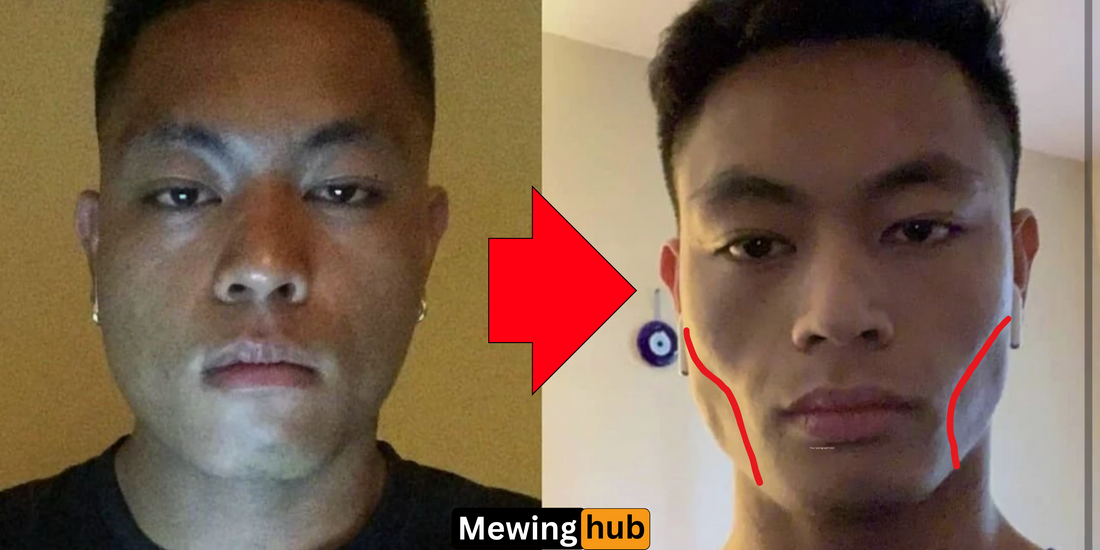
Share
In the world of looksmaxxing, achieving a well-defined jawline and balanced facial structure is a common goal. Two popular techniques often discussed are mewing vs chewing. While these methods are distinct in their approach, they complement each other in powerful ways.
Mewing focuses on bone remodeling and facial alignment, while chewing strengthens the jaw muscles. Together, they form a comprehensive strategy for improving both the structure and aesthetics of your face.
This article explores the differences between mewing vs chewing, their individual benefits, and why combining them is the ultimate approach to enhancing your facial features.
What is Mewing?
Mewing is a technique that involves maintaining proper tongue posture by pressing the entire tongue against the roof of your mouth (the palate).

Popularized by Dr. John Mew and his son Dr. Mike Mew, this practice is rooted in orthotropics—a field focused on guiding natural facial growth through correct oral posture.
How Mewing Works
- Bone Remodeling: By applying gentle upward pressure on the palate, mewing encourages forward and upward movement of the maxilla (upper jaw), which can influence facial structure over time.
- Improved Facial Symmetry: Proper tongue posture helps align the jaw and midface, potentially correcting minor asymmetries.
- Nasal Breathing: Mewing promotes nasal breathing, which supports better oxygen intake and reduces mouth breathing-related issues like recessed jawlines or long faces.
Mewing is particularly effective during developmental years but can still benefit adults by improving posture, breathing habits, and subtle facial changes over time.
What is Hard Chewing?
Chewing involves repetitive movements of the jaw to break down food or gum. In looksmaxxing, chewing hard foods or gum is often used as a method to strengthen the masseter muscles (jaw muscles), contributing to a sharper jawline.

How Chewing Works
- Muscle Growth: Chewing activates the masseter muscles, increasing their size and definition with consistent practice.
- Improved Bite Force: Studies show that chewing exercises can enhance masticatory performance and bite strength.
- Facial Symmetry: Balanced chewing on both sides of the mouth can help prevent asymmetries in muscle development.
Chewing primarily targets muscle growth but does not affect bone structure like mewing does.
Mewing vs Chewing: Key Differences
Both techniques have unique benefits but serve different purposes in improving facial aesthetics.
| Aspect | Mewing | Chewing |
|---|---|---|
| Focus | Bone remodeling | Muscle growth |
| Target Area | Maxilla (upper jaw), palate | Masseter muscles (jawline) |
| Primary Benefit | Improved facial structure | Stronger, more defined jawline |
| Breathing Impact | Promotes nasal breathing | Limited impact on breathing habits |
| Timeframe | Long-term changes | Short-term muscle gains |
Why Mewing and Chewing Work Best Together
While mewing focuses on bone alignment and chewing targets muscle growth, combining these practices can yield complementary results:

1. Enhanced Jawline Definition
Chewing builds masseter muscles for a stronger jawline, while mewing ensures proper alignment of the maxilla for better overall proportions. Together, they create a well-defined lower face with balanced symmetry.
2. Improved Facial Harmony
Mewing promotes upward and forward growth of the upper jaw, while chewing strengthens the lower face muscles. This combination enhances both bone structure and muscular tone for a more harmonious appearance.
3. Supports Looksmaxxing Goals
In looksmaxxing, achieving an attractive face involves optimizing both bone structure and soft tissue (muscles). Mewing lays the foundation for structural improvements, while chewing adds definition to key areas like the jawline.
How to Incorporate Both into Your Routine
To maximize results from mewing and chewing, follow these tips:

Step 1: Master Proper Tongue Posture for Mewing
- Rest your entire tongue against the roof of your mouth without touching your front teeth.
- Keep lips closed and teeth lightly touching or slightly apart.
- Practice nasal breathing throughout the day to reinforce proper posture.
Step 2: Add Chewing Exercises to Build Jaw Muscles
- Use hard gum like JAWLINER or mastic gum to engage your masseter muscles effectively.
- Chew evenly on both sides of your mouth to prevent asymmetry.
- Limit chewing sessions to 20–30 minutes per day to avoid overworking your jaw.
Step 3: Combine Techniques for Maximum Impact
- Practice mewing consistently throughout the day while incorporating short chewing sessions.
- Focus on maintaining proper tongue posture even while chewing gum to reinforce good habits.

Get Yourself Some Jawlize Chewing Tabs !
Potential Risks of Overdoing It
While mewing and chewing are generally safe when practiced correctly, overdoing either can lead to issues:
Risks of Overdoing Mewing:
- Excessive pressure on the palate may cause dental problems like tooth movement or gum recession.
- Incorrect tongue posture can strain neck muscles or worsen TMJ issues.
Risks of Overdoing Chewing:

- Excessive chewing may lead to hypertrophy (overdevelopment) of the masseter muscles, creating an unbalanced appearance.
- Overworking your jaw can cause soreness or exacerbate TMJ disorders.
To avoid these risks, practice moderation and prioritize proper technique.
Frequently Asked Questions About Mewing vs Chewing
Can You See Results Faster with Chewing or Mewing?
Chewing delivers faster results in terms of muscle growth but doesn’t affect bone structure like mewing does. Mewing requires long-term commitment for noticeable changes in facial alignment.
Is Chewing Part of Mewing?
Yes! Chewing complements mewing by strengthening the jaw muscles that support proper tongue posture.
Can Adults Benefit from Both Techniques?
Absolutely! While younger individuals may see more dramatic changes from mewing due to bone plasticity, adults can still benefit from improved posture, breathing habits, and muscle tone through consistent practice.
Conclusion: Mewing vs Chewing—Why Not Both?
When it comes to looksmaxxing, there’s no need to choose between mewing and chewing—they work best in tandem. Mewing lays the groundwork for structural improvements by aligning bones and promoting nasal breathing, while chewing builds muscle definition for a sharper jawline.
By combining these techniques into your daily routine with proper moderation and consistency, you can achieve a more balanced, attractive face that aligns with your looksmaxxing goals.
Start practicing today—your future self will thank you!



